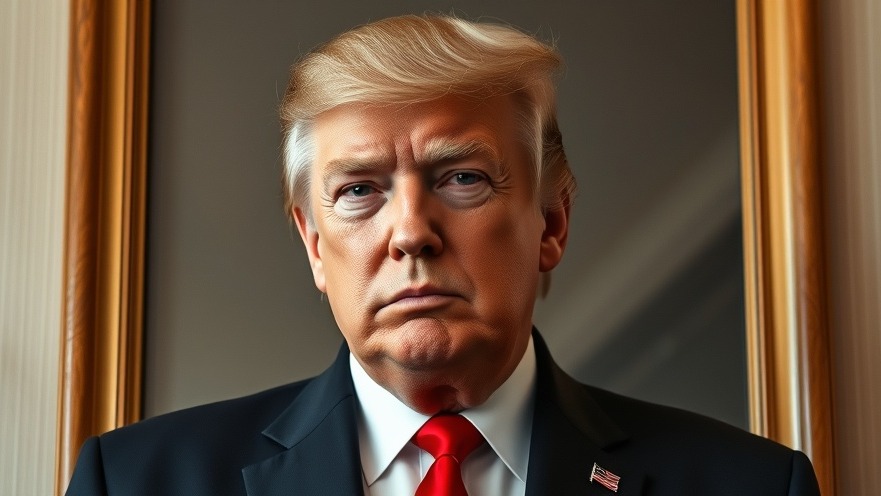
Colorado Capitol’s Controversial Trump Portrait: A Symbol of Political Discontent
In a move reflecting the broader tensions within American politics, the Colorado State Capitol has replaced a portrait of former President Donald Trump that many labeled as 'distorted.' This change occurred after months of backlash, showcasing how art can ignite political discussion and signify societal standards. The replaced artwork, criticized by Trump supporters for allegedly presenting an unflattering view of the former president, highlighted the ongoing debate regarding representation in governmental spaces.
Understanding the Reaction: Why a Portrait Matters
A portrait, especially in a political arena, serves as more than mere decor; it symbolizes values, legacies, and narratives within society. Trump's supporters argued that the previous portrait unjustly represented him, underlining their feelings of disenfranchisement. For many, such a symbolic act felt like an attack on their political identity and the values Trump embodied during his presidency.
The backlash against the initial artwork illustrates a broader cultural divide. In an era where imagery and representation fuel discourse, it’s vital to recognize how these elements influence perceptions of leadership and authority. In many communities, portraits carry implications that reach into the political psyche; they can either foster unity or amplify division.
Bridging Divides: Introducing a New Artistic Perspective
The replacement portrait, created by Christian worship artist Vanessa Horabuena, aims to present a more balanced view. Horabuena's work is seen as an attempt to bridge gaps by portraying Trump more favorably, which may resonate with his supporters but could also invite scrutiny from critics.
This change promotes necessary dialogue about representation in public spaces. The new artwork opens avenues for conversations about the values that communities hold dear and how these can be expressed artistically. It raises the essential question: how do we ensure all perspectives are represented while avoiding inflammatory symbolism that exacerbates existing rifts?
The Role of Art in Politics: A Historical Perspective
Art and politics have been intertwined throughout history, serving as reflections of the times. From the grand portraits of monarchs to political cartoons, artists have wielded their pens and brushes to influence public opinion. In times of political upheaval, such as the American Revolution or the Civil Rights Movement, art has played a crucial role in shaping narratives and galvanizing movements. The Capitol’s decision to replace Trump’s portrait nods to this tradition, recognizing the transformative power of representation.
Looking Ahead: What This Means for Future Political Art
As communities navigate these monumental cultural discussions, the contentious nature of Trump's portrait raises anticipatory questions about future representations in politics. Will this trend toward re-evaluation of political art continue? How will future artists grapple with depicting polarizing figures? In considering these prospects, it becomes evident that public art will remain a battleground for ideas, reflections, and cultural identity.
Engaging in the Dialogue: The Power of Civic Participation
The debate surrounding the Capitol’s portrait serves as a call to action for individuals to engage with the political processes in their communities. Civic participation not only fosters a sense of accountability among representatives but also ensures diverse voices contribute to the narrative. Whether through public forums, social media platforms, or community gatherings, individuals can make their opinions heard regarding how their leaders are depicted.
As states navigate the complexities of national identity, every portrait unveiled or removed becomes a mirror reflecting the multifaceted perspectives that define human experiences. Engagement in these conversations is crucial for a well-rounded society.
Conclusion: Your Voice Matters in the Art of Politics
As the Colorado Capitol adjusts its artistic representations of leadership, it’s essential to consider your role within this vibrant dialogue. Take the opportunity to engage in discussions surrounding political representation within your community. Participate in local events, voice your opinions, and contribute to the evolution of civic engagement; your perspective is vital in the ever-changing landscape of political art.
 Add Element
Add Element  Add Row
Add Row 



Write A Comment